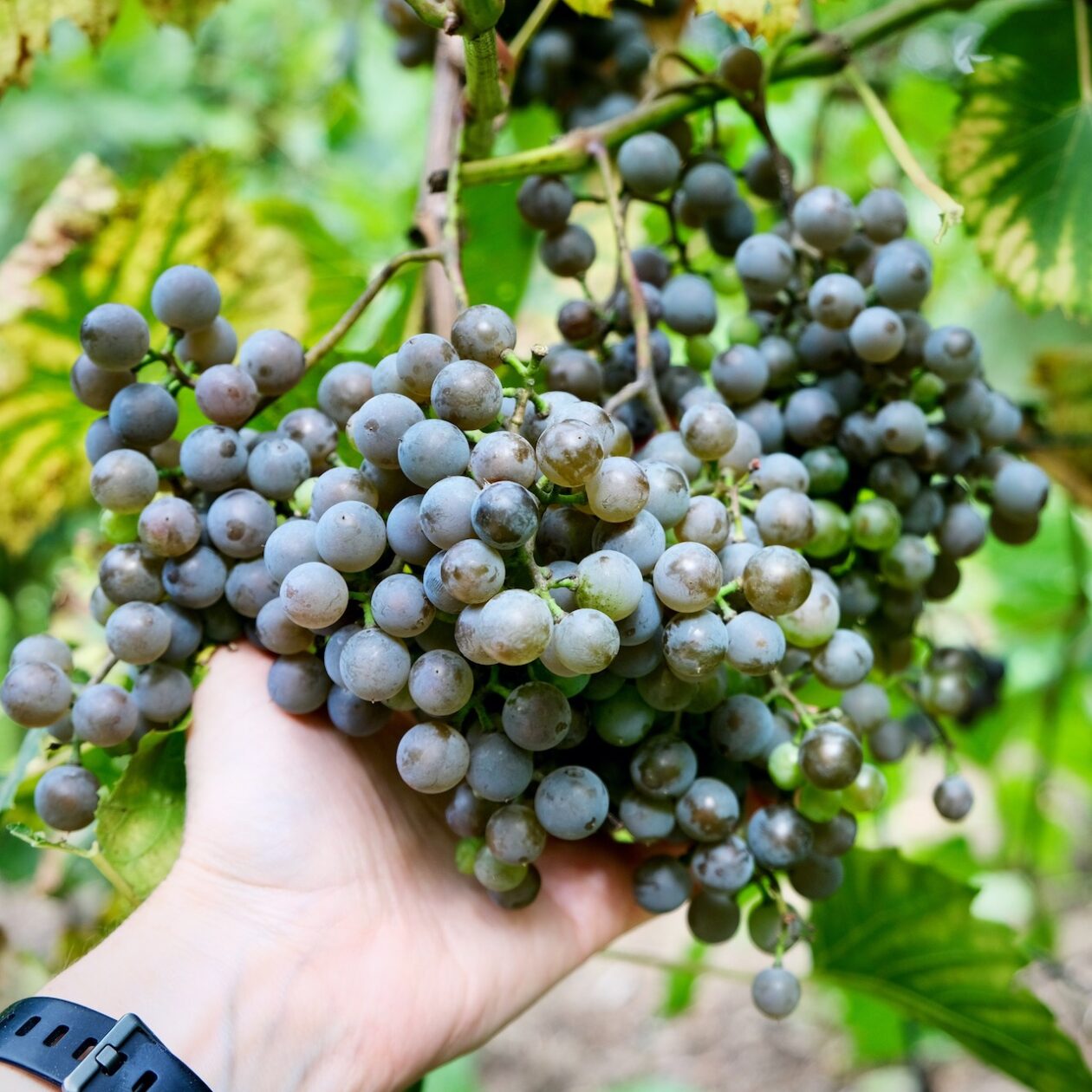Grapes developed via breeding programs which have genetic material from two or more Vitis species. The aim is to bring forth or accentuate traits in the new hybrid variety, for example cold hardiness, disease resistance, rootstock fitness, or flavor. A synonym, used principally in Europe, is interspecific cross.

Grapes used for hybrid breeding derive from European, North American, and Asian species. Vitis vinifera, the European grapevine, is frequently part of the parentage. American species of Vitis include riparia, labrusca, rupestris, rotundifolia, and aestivalis. The Asian vine Vitis amurensis is also used.
It’s not uncommon for multiple species to be incorporated into a new vine, given the number of plant generations required for breeders to create a new hybrid.
Hybrids are technically not crosses; a cross results from using a single species to develop a new vine. Hybrids are also not genetically modified organisms that result from DNA inserted manually into the genome. Desirable traits are instead developed by traditional plant breeding, which relies on pollination.
In the field, breeders meticulously remove stamens from clusters of one parent, then manually supply pollen from a second parent. After the clusters and seeds develop, they grow out the resulting seed, and, either via repeated generational trials or by genetic sequencing of the leaf material (or a combination), end up with vines that have the desired traits.



